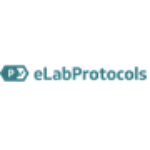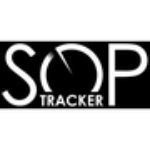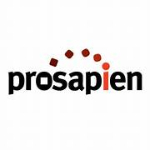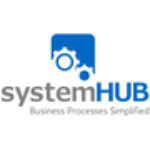TechnologyCounter provides genuine, unbiased real user reviews to help buyers make informed decisions. We may earn a referral fee when you purchase through our links, at no extra cost to you.
List of Best Standard Operating Procedures Software
Showing 1 - 11 of 11 productseLabProtocols, your all-in-one solution for efficient and organized laboratory protocols. Simplify your research process with our user-friendly platform that streamlines protocol creation, sharing, and collaboration. Join the community of scientists...Read eLabProtocols Reviews
SOPTracker is a solution for streamlining your standard operating procedures (SOPs). With its user-friendly interface features, SOPTracker makes managing and organizing your SOPs a seamless is a process. Say goodbye to the hassle of manual tracking a...Read SOPTracker Reviews
Intellect is an innovative software designed to enhance your cognitive abilities and empower your mind. With powerful features technology, Intellect is the perfect tool for sharpening your mental prowess and unlocking your full potential. Say hello t...Read Intellect Reviews
Keeni is a software solution that streamlines and simplifies your everyday tasks. With its user-friendly interface and robust features, Keeni is perfect for businesses of all sizes. Let Keeni take care of the details while you focus on what matters m...Read Keeni Reviews
ProcessKit is a project management tool designed to streamline and optimize your teams workflow. With its user-friendly interface and powerful features, ProcessKit simplifies complex processes and empowers teams to collaborate efficiently and achieve...Read ProcessKit Reviews
Pro-Sapien, the complete EHS management software designed to streamline processes and enhance compliance for organizations. With a user-friendly interface features, Pro-Sapien empowers businesses to effortlessly manage and report on their environment...Read Pro-Sapien Reviews
SweetProcess is a business process management software that streamlines workflows, improves efficiency, and promotes collaboration within teams. With its intuitive interface and customizable features, SweetProcess helps businesses of all sizes to sta...Read SweetProcess Reviews
systemHUB - your go-to solution for streamlining your business processes and centralizing vital information. With its user-friendly interface is a features, systemHUB helps boost productivity and organization within your team. Say goodbye to scattere...Read systemHUB Reviews
Way We Do, an innovative software designed to streamline and simplify your business processes. With its user-friendly interface and customizable features, Way We Do helps you manage tasks, collaborate with team members, and ensure consistency in your...Read Way We Do Reviews
Whale is the majestic giant of the ocean, shrouded in mystery and wonder. With its massive size and gentle nature, the whale has captured the hearts and minds of people all over the world. From its beautiful songs to its graceful movements, the whale...Read Whale Reviews
XSOL Workplace is a powerful, all-in-one platform that streamlines workflows, increases productivity, and promotes collaboration for businesses of all sizes. With its user-friendly interface and customizable features, XSOL Workplace is the perfect so...Read XSOL Workplace Reviews
- What Is Standard Operating Procedures Software?
- Top Reasons Why Businesses Need Standard Operating Procedures Software?
- What Are the Top Key Features of Standard Operating Procedures Software?
- What Are the Top Benefits of Standard Operating Procedures Software?
- What Are the Steps to Choose the Right Standard Operating Procedures Software?
- What Are the Types of Standard Operating Procedures Software for Different Industries?
- What Are the Technology Trends for Best Standard Operating Procedures Software?
- What Are the Deployment Options for Standard Operating Procedures Software?
What Is Standard Operating Procedures Software?
Standard operating procedures software is a technological instrument employed to generate uniform and quantifiable directives that a company or enterprise can use as a reference point during job execution. The utilization of this software results in a reduction in training time and an enhancement in the precision and efficiency of work performance.
The implementation of this approach streamlines operational processes, enhances uniformity, encourages adherence to regulations, and improves overall productivity. Standard Operating Procedure (SOP) software is designed to enhance the efficiency of a business or organization. It achieves this by offering a comprehensive collection of straightforward instructions and guidelines that facilitate executing certain tasks.
The implementation of standardized procedures and protocols within an organization facilitates the establishment of consistency and organization in its operational activities. The practice of outlining steps, procedures, and workflows is beneficial for enhancing the consistency, precision, and efficiency of many tasks.
The utilization of SOP software mitigates the uncertainty linked to recurring tasks and fosters the enhancement of processes that are both more streamlined and productive. The implementation of task management systems effectively enhances worker productivity by promoting task adherence and prioritization of critical tasks. Moreover, it enables firms to efficiently and expeditiously monitor adherence to processes and procedures.
In general, SOP management software is specifically developed to facilitate process enhancement, enhance adherence to regulations, and optimize operational effectiveness for businesses and organizations. Through the utilization of the best SOP software, firms can mitigate the workload burden on their staff, all the while ensuring that activities are executed with precision and accuracy.
Top Reasons Why Businesses Need Standard Operating Procedures Software?
1. Increased Efficiency: The utilization of standard operating procedures software can effectively facilitate adherence to uniform and precise procedures, hence enhancing operational efficiency.
2. Avoid Overseeing & Manual Documentation: The automation of Standard Operating Procedures (SOPs) documentation and tracking can result in time savings and effort reduction for enterprises.
3. Improved Compliance: The utilization of Standard Operating Procedure software enables firms to effectively fulfill their regulatory and legal requirements, while also offering the capability to promptly notify relevant stakeholders of any necessary modifications or updates.
4. Reduced Risk: Organizations can effectively address risks related to compliance failures, data breaches, and incidents by implementing and maintaining comprehensive procedures that are regularly documented and monitored.
5. Improved Collaboration: The utilization of categorical documents and reminders facilitates effective team coordination, ensuring that projects progress smoothly and efficiently while minimizing any potential confusion or delays.
6. Digital Assets: SOP software facilitates the storage and retrieval of digital files and documents that would often be maintained in physical format, hence enhancing their convenience and accessibility.
7. Reporting Capabilities: An effective Statement of Purpose the best SOP software can generate informative reports and analytics, enabling teams to monitor their performance and identify areas for improvement.
8. Systematize Onboarding: Businesses can ensure a smooth onboarding experience by furnishing new workers with a well-structured and all-inclusive collection of Standard Operating Procedures (SOPs).
9. Streamline Procedures: The implementation of a Standard Operating Procedure (SOP) system facilitates the prompt modification of procedures if they become obsolete, enabling the organization to maintain its agility and responsiveness.
10. Data Protection & Security: Business enterprises can effectively safeguard data privacy and security by electronically storing standard operating procedures (SOPs) and implementing robust measures to restrict access exclusively to authorized people.
11. Quality Assurance: By implementing a system that is capable of being audited and includes detailed procedures, firms may effectively guarantee the achievement of high-quality outcomes.
12. Cost Savings: Automated solutions have the potential to save expenses associated with human labor, while also equipping organizations with the necessary resources to maintain compliance and enhance productivity.
13. Audit Trails: The utilization of the best standard operating procedure software enables the monitoring of staff activities, guarantees regulated entry to confidential papers, and upholds the integrity of data.
14. Accurate Documentation: The implementation of SOP software for small business systems facilitates efficient retrieval of information based on categorization, hence enhancing the ease with which teams can locate the specific information they require.
15. Enhanced Customer Support: Automated processes facilitate the expeditious resolution of client complaints and inquiries, hence minimizing operational disruptions and enhancing consumer feedback.
What Are the Top Key Features of Standard Operating Procedures Software?
1. Automate SOP: The utilization of standard operating procedures software facilitates the process of automating SOPs and establishing an optimized workflow that is customized to specific requirements.
2. Streamlined Workflow: The utilization of SOP software facilitates the optimization of workflow processes and the mitigation of redundant jobs. One can ensure that their documents adhere to established standards and are stored methodically and securely.
3. Version Control: The utilization of standard operating procedures (SOP) software facilitates the maintenance of document accuracy by providing the capability to regulate document versions. This software streamlines the process of identifying document modifications and detecting the uploading of new versions.
4. Compliance: The utilization of SOP management software serves to guarantee that the policies and operations of a firm adhere to regulatory requirements and industry benchmarks.
5. Accessibility and Mobility: The utilization of standard operating procedures (SOP) software facilitates the efficient creation and retrieval of documents across many devices, hence guaranteeing the accessibility of the accurate version of a document at the required time.
6. Audit Tracking: The utilization of the best SOP software facilitates the efficient monitoring and examination of operational activities. The ability to monitor performance, streamline compliance, and track the origin of a document or job is available.
7. Reporting: The best standard operating procedure software provides users with a full perspective of operational operations and facilitates the efficient generation of precise reports in a timely manner. One can ensure that they remain current with the most recent company policies and laws.
What Are the Top Benefits of Standard Operating Procedures Software?
Standard operating procedures (SOP) software offers a multitude of advantages that are worth highlighting.
- Enhanced productivity and precision in work due to the provision of clearly presented and comprehensible procedures.
- Organizational adherence to legislation and industry best practices is achieved through the implementation of established guidelines and protocols.
- The implementation of standardized processes has facilitated improved and efficient communication across several departments, ensuring that all individuals are well-informed and aligned with the established protocols.
- The program facilitates a streamlined process for employee onboarding, hence minimizing the time required for individuals to become proficient in their roles. This is achieved through the provision of readily accessible and pertinent information.
- The implementation of a centralized document management system leads to enhanced accuracy, as all documents are stored in a single area and can be conveniently retrieved.
- Implemented optimized customer service procedures, facilitating prompt and effective resolution of customer inquiries.
- The implementation of predefined protocols and standards fosters a culture of consistency in product quality since it ensures that staff members are well-informed and adhere to these established guidelines.
- The accessibility of all training materials through a unified platform contributes to the improvement of safety measures.
- The implementation of job automation leads to cost reduction by minimizing the need for manual procedures.
What Are the Steps to Choose the Right Standard Operating Procedures Software?
1. Identify Your Needs: Conduct an assessment of your firm to ascertain the precise purpose and objectives of the standardized operating procedures software. This analysis aims to examine the potential risks that may arise as a consequence of the absence or improper utilization of software.
2. Research Available Options: Utilize accessible resources to conduct comprehensive research on various classifications of standard operating procedures software, encompassing their distinct attributes and associated cost structures. Seek the perspectives of authoritative individuals and afterward determine the system that most effectively aligns with your requirements.
3. Get Relevant Feedback: Solicit feedback from colleagues and personnel regarding their preferences for the most valuable features in a system.
4. Consider Your Budget: When considering cost, it is important to determine the most appropriate and cost-effective software alternative.
5. Set Up Demo System: It is advisable to request the vendor to furnish a trial version or a functional demonstration of the software that has piqued your attention. If feasible, it is recommended to request non-technical personnel to evaluate the system.
6. Purchase the Right Software: Upon achieving complete satisfaction with the system, proceed with the acquisition of said system for implementation within your firm.
7. Train the Staff: The efficacy of the procedural system is contingent upon the proficiency of the staff members in utilizing it. Deliver comprehensive training and educational programs on the system.
8. Monitor Performance: It is vital to ascertain that the procedural system is being employed in a manner that is both accurate and efficient. It is important to closely observe and evaluate performance, and implement any required modifications accordingly.
What Are the Types of Standard Operating Procedures Software for Different Industries?
In several industries, there exists a range of standard operating procedures software that caters to specific requirements.
1. Document authoring platforms: These processes are specifically developed to facilitate the generation, evaluation, authorization, and dissemination of standard operating protocols within industries necessitating intricate documentation.
2. Task management software: These tools are specifically developed to aid businesses in effectively managing and optimizing the implementation, evaluation, and monitoring of standard operating procedures. By utilizing these tools, organizations can more readily detect areas of inefficiency or procedural errors.
3. Collaboration software: This program facilitates collaborative efforts across teams in the execution of standard operating procedures, offering a centralized platform for document storage, task allocation, and process approval.
4. Automation software: This particular program optimizes the workflow involved in generating, overseeing, and disseminating standard operating procedures. Additionally, it has the capability to streamline and mechanize processes and the corresponding tasks involved in them.
5. Compliance platforms: The primary purpose of these platforms is to assist industries in maintaining compliance with regulatory requirements. The utilization of this tool aids businesses in the documentation and monitoring of their standard operating procedures, hence providing them with more visibility into the procedural workflow.
What Are the Technology Trends for Best Standard Operating Procedures Software?
The primary technological advancements pertaining to optimal standard operating procedures software encompass the subsequent elements.
1. Automation: The incorporation of automation capabilities facilitates enhanced efficiency, accuracy, and adherence to the best standard operating procedure software and other workflow processes. Automation plays a crucial role in streamlining processes by reducing the need for manual intervention and expediting the execution of standard operating procedures (SOPs) and other workflows.
2. AI-driven Analytics: Machine learning and artificial intelligence (AI) play a crucial role in capturing, analyzing, and extracting actionable insights from the data produced by standard operating procedures (SOPs) and various other workflows. This practice aids in the mitigation of errors and facilitates expedited detection and resolution of any encountered problems.
3. Cloud-based Platforms: Cloud-based SOP software solutions facilitate the efficient management and automation of organizational activities in real time, regardless of geographical location.
4. IoT Connected Devices: The growing prevalence of the Internet of Things (IoT) has enabled enterprises to utilize interconnected devices for efficient execution and monitoring of SOP management software. This has the potential to enhance visibility and save processing time.
5. Consolidated Reporting: Consolidated reporting solutions facilitate the evaluation of the performance of numerous Standard Operating Procedures (SOPs) and offer a comprehensive perspective on the overall performance of all workflows. This facilitates the identification of trends and the precise management of processes within businesses.
6. Secure Data Protection: The growing emphasis on data security and protection has resulted in a heightened demand for the best SOP management software that guarantees adherence to data privacy rules. Robust encryption and various security protocols play a pivotal role in safeguarding sensitive information.
What Are the Deployment Options for Standard Operating Procedures Software?
The deployment choices for standard operating procedures software are contingent upon the specific software utilized and the unique requirements of the enterprise. In the realm of SOP software, it is commonly observed that there exist three primary deployment alternatives: on-premise, cloud-based, and hybrid.
The on-premise deployment model is a conventional approach in which software is placed on the user's server, and data is exclusively stored within the user's premises. The aforementioned alternative is deemed to be the most secure because all data is stored and managed locally. However, it is important to note that this approach necessitates a greater allocation of time and resources for maintenance purposes.
Cloud-based Standard Operating Procedure SOP software is implemented through internet connectivity, enabling the storage of data in remote locations known as the cloud. This implies that the user is relieved from the responsibility of server management, as the provider of the SOP management software assumes the responsibility of maintenance. One benefit of this approach is its user-friendly nature and the potential for cost reduction.
The hybrid deployment approach entails the integration of both on-premise and cloud-based solutions. This feature enables users to access data in either a local or cloud environment, depending on their specific requirements.
Furthermore, this feature facilitates the synchronization of data between the two settings, presenting a significant advantage for conducting data analysis. Regardless of the chosen deployment strategy, it is imperative to take into account the regulatory requirements and security measures that need to be adhered to when dealing with sensitive data.











